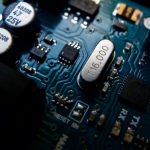Researchers at the University of Maryland and Temple discovered a new class of
swelling magnets, which are magnets that expand when they contact a magnetic field. When these cool magnets encounter a magnetic field, they not only expand. They release very little heat.
The shapes of magnets change when magnetized - we’ve know this since the 1840s thanks to James Prescott Joule. Joule was the first to describe
Joule Magnetostriction. Joule Magnetostriction is a property of ferromagnetic materials. It describes how the shape of the material is altered when magnetized. Ferromagnetic materials are composed of different sections that have different polarizations. So when placed in a magnetic field, the sections move altering the dimensions of the material. This process, while still very cool, is only one directional and results in energy loss due to friction.
How Do Expanding Magnets Work?
These new magnets, non-Joulian magnets, are capable of changing volume as well as shape when magnetized. Using a simple recipe of baking at 1400 degrees Fahrenheit and rapid cooling, the researchers caused the molecules of an iron-based alloy to rearrange into a cell-like structure. The new structural arrangement of the molecules allows the magnet to be multidirectional. A multidirectional magnet that swells while not releasing energy in the form of heat is a huge development for the energy conservation industry.
What Does This Mean for Electronics?
Magnets are currently used in
actuators to generate a magnetic field. An actuator is a motor that controls a mechanism by converting energy into motion. The magnetic field provided by the magnet operates the reed switch or the sensor. But even when only two-directional, actuators require lots of magnets. The new type of magnet makes
compact omnidirectional actuators possible.
This important discovery could revolutionize the way electronics are made. It will make them smaller and more efficient because the non-Joulian magnets experience little energy loss when expanding. How do you think these new non-Joulian magnets will be used?

